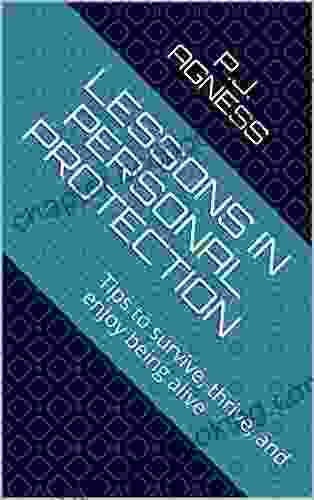Break the Stress Cycle: A Comprehensive Guide to Empowering Children and Parents

In today's fast-paced world, stress has become a pervasive issue for both children and adults. With the constant demands of school, extracurricular activities, and family responsibilities, it can be difficult to find moments of peace and relaxation.
Stress can manifest in a variety of ways, from physical symptoms such as headaches and stomachaches to emotional symptoms such as anxiety, irritability, and difficulty concentrating. If left unchecked, stress can have a significant impact on children's physical, emotional, and cognitive development.
4.8 out of 5
| Language | : | English |
| File size | : | 3252 KB |
| Text-to-Speech | : | Enabled |
| Screen Reader | : | Supported |
| Enhanced typesetting | : | Enabled |
| Word Wise | : | Enabled |
| X-Ray for textbooks | : | Enabled |
| Print length | : | 307 pages |
Fortunately, there are effective strategies that can help children and parents break the cycle of stress and foster a positive, thriving environment. This article will provide practical guidance on understanding the causes of stress in children, developing effective coping mechanisms, and promoting emotional well-being.
Understanding the Causes of Stress in Children
Identifying the sources of stress in children is the first step towards developing effective coping mechanisms. Common causes of stress in children include:
- Academic pressure: Schoolwork, tests, and homework can be major sources of stress for children. The pressure to succeed can lead to anxiety, perfectionism, and difficulty sleeping.
- Extracurricular activities: While extracurricular activities can be beneficial for children, they can also add to their stress levels. Overcommitting to activities can lead to burnout and decreased academic performance.
- Family relationships: Family conflict, divorce, and financial problems can all take a toll on children's emotional well-being. Children may feel stressed when they witness conflict between their parents or when they worry about their family's financial situation.
- Social pressures: Children may feel stressed about fitting in with their peers or about being bullied or excluded. Social media can also be a source of stress, as children may compare themselves to others or feel pressured to conform to unrealistic standards.
Developing Effective Coping Mechanisms
Once you have identified the sources of stress in your child's life, you can begin to develop effective coping mechanisms. Here are some strategies to consider:
- Encourage open communication: Talk to your child about their stress and listen to their concerns. Let them know that it's okay to feel stressed and that you're there to support them.
- Help your child develop time management skills: Teach your child how to prioritize their tasks and set realistic goals. This can help them reduce their workload and feel less overwhelmed.
- Encourage physical activity: Exercise is a great way to relieve stress and improve overall well-being. Encourage your child to participate in activities they enjoy, such as sports, dancing, or playing outside.
- Promote relaxation techniques: Teach your child relaxation techniques such as deep breathing, yoga, or meditation. These techniques can help them calm their minds and bodies.
- Seek professional help if needed: If your child is struggling to cope with stress, don't hesitate to seek professional help. A therapist can provide your child with additional support and guidance.
Promoting Emotional Well-being
In addition to developing coping mechanisms, it's important to promote emotional well-being in children. Here are some ways to do this:
- Create a supportive home environment: Make sure your child feels loved, supported, and safe at home. Let them know that they can always talk to you about anything that's bothering them.
- Encourage positive self-talk: Help your child develop a positive self-image by encouraging them to focus on their strengths and accomplishments. Teach them to challenge negative thoughts and replace them with positive ones.
- Foster resilience: Help your child develop resilience by teaching them how to bounce back from setbacks and challenges. Let them know that it's okay to make mistakes and that they can learn from their experiences.
- Encourage social connections: Make sure your child has opportunities to interact with friends and family. Social connections can help reduce stress and promote emotional well-being.
Breaking the Stress Cycle for Parents
It's important to remember that parents play a vital role in breaking the cycle of stress for their children. When parents are stressed, it can create a stressful environment for the entire family. Here are some tips for parents on how to manage their stress and create a more positive home environment:
- Take care of your own emotional needs: Make sure you're getting enough sleep, eating healthy foods, and exercising regularly. These things will help you stay healthy and better able to cope with stress.
- Set realistic expectations: Don't put too much pressure on yourself or your child. Everyone makes mistakes. It's okay to let go of perfection and focus on progress.
- Seek support: Talk to your partner, friends, family, or a therapist about your stress. Sharing your feelings can help you feel better and develop new coping mechanisms.
- Create a positive home environment: Make sure your home is a place where everyone feels loved, supported, and safe. Spend time together as a family and engage in activities that everyone enjoys.
Breaking the cycle of stress is essential for the well-being of children and families. By understanding the causes of stress, developing effective coping mechanisms, and promoting emotional well-being, we can create a more positive and thriving environment for our children to grow and learn. Remember, you're not alone in this journey. There are resources and support available to help you and your family break the cycle of stress and create a brighter future.
If you're looking for a comprehensive guide to helping your child and yourself break the stress cycle, I encourage you to check out my book, "How To Help Your Child And You Break The Stress Cycle And Successfully Engage." This book provides practical strategies and insights to empower you and your child to overcome stress and achieve emotional well-being.
Click here to learn more about my book and Free Download your copy today!

4.8 out of 5
| Language | : | English |
| File size | : | 3252 KB |
| Text-to-Speech | : | Enabled |
| Screen Reader | : | Supported |
| Enhanced typesetting | : | Enabled |
| Word Wise | : | Enabled |
| X-Ray for textbooks | : | Enabled |
| Print length | : | 307 pages |
Do you want to contribute by writing guest posts on this blog?
Please contact us and send us a resume of previous articles that you have written.
 Book
Book Novel
Novel Page
Page Chapter
Chapter Text
Text Story
Story Genre
Genre Reader
Reader Library
Library Paperback
Paperback E-book
E-book Magazine
Magazine Newspaper
Newspaper Paragraph
Paragraph Sentence
Sentence Bookmark
Bookmark Shelf
Shelf Glossary
Glossary Bibliography
Bibliography Foreword
Foreword Preface
Preface Synopsis
Synopsis Annotation
Annotation Footnote
Footnote Manuscript
Manuscript Scroll
Scroll Codex
Codex Tome
Tome Bestseller
Bestseller Classics
Classics Library card
Library card Narrative
Narrative Biography
Biography Autobiography
Autobiography Memoir
Memoir Reference
Reference Encyclopedia
Encyclopedia Mike Bond
Mike Bond W N P Barbellion
W N P Barbellion New Epoch Weekly
New Epoch Weekly Rachel Berenson Perry
Rachel Berenson Perry Michael Werner
Michael Werner Nick Middleton
Nick Middleton Michael Harner
Michael Harner Natalia Molina
Natalia Molina Raj Kumar
Raj Kumar Victoria Boone Ma Bcba
Victoria Boone Ma Bcba Patricia O Connor
Patricia O Connor Merry White
Merry White Michael Beer
Michael Beer Paola Opal
Paola Opal William Lewis Manly
William Lewis Manly Moying Li
Moying Li Monroe Wildrose
Monroe Wildrose Mitchell Albala
Mitchell Albala Mother Hood
Mother Hood Paul J Batura
Paul J Batura
Light bulbAdvertise smarter! Our strategic ad space ensures maximum exposure. Reserve your spot today!

 Jorge Luis BorgesCouple Struggles to Find the Right Infertility Doctor: A Journey of Hope and...
Jorge Luis BorgesCouple Struggles to Find the Right Infertility Doctor: A Journey of Hope and... Sidney CoxFollow ·15.1k
Sidney CoxFollow ·15.1k Christian BarnesFollow ·7.9k
Christian BarnesFollow ·7.9k W.H. AudenFollow ·8k
W.H. AudenFollow ·8k Francisco CoxFollow ·12.8k
Francisco CoxFollow ·12.8k Pat MitchellFollow ·11.1k
Pat MitchellFollow ·11.1k Dan BellFollow ·7.5k
Dan BellFollow ·7.5k Diego BlairFollow ·6.9k
Diego BlairFollow ·6.9k Glen PowellFollow ·9.1k
Glen PowellFollow ·9.1k

 Trevor Bell
Trevor BellUncover the Thrilling Mystery in "It Ain't Over, Cole...
Prepare yourself...

 Garrett Bell
Garrett BellHow to Stay True to Yourself and Stand Out From the Crowd
In a world that...

 Dennis Hayes
Dennis HayesDrill Instructor Strategies And Tactics For Success
Unleash Your Inner Warrior and Conquer...

 Guy Powell
Guy Powell101 Awesome Women Who Changed Our World: A Celebration of...
Throughout history,...

 Ashton Reed
Ashton ReedAn Iraq War Tank Commander's Inspirational Memoir of...
When he was just 19 years old, John Q....

 Dean Cox
Dean CoxLady Trader in the Transvaal: A Literary Safari through a...
Prologue: A Journey into the...
4.8 out of 5
| Language | : | English |
| File size | : | 3252 KB |
| Text-to-Speech | : | Enabled |
| Screen Reader | : | Supported |
| Enhanced typesetting | : | Enabled |
| Word Wise | : | Enabled |
| X-Ray for textbooks | : | Enabled |
| Print length | : | 307 pages |










